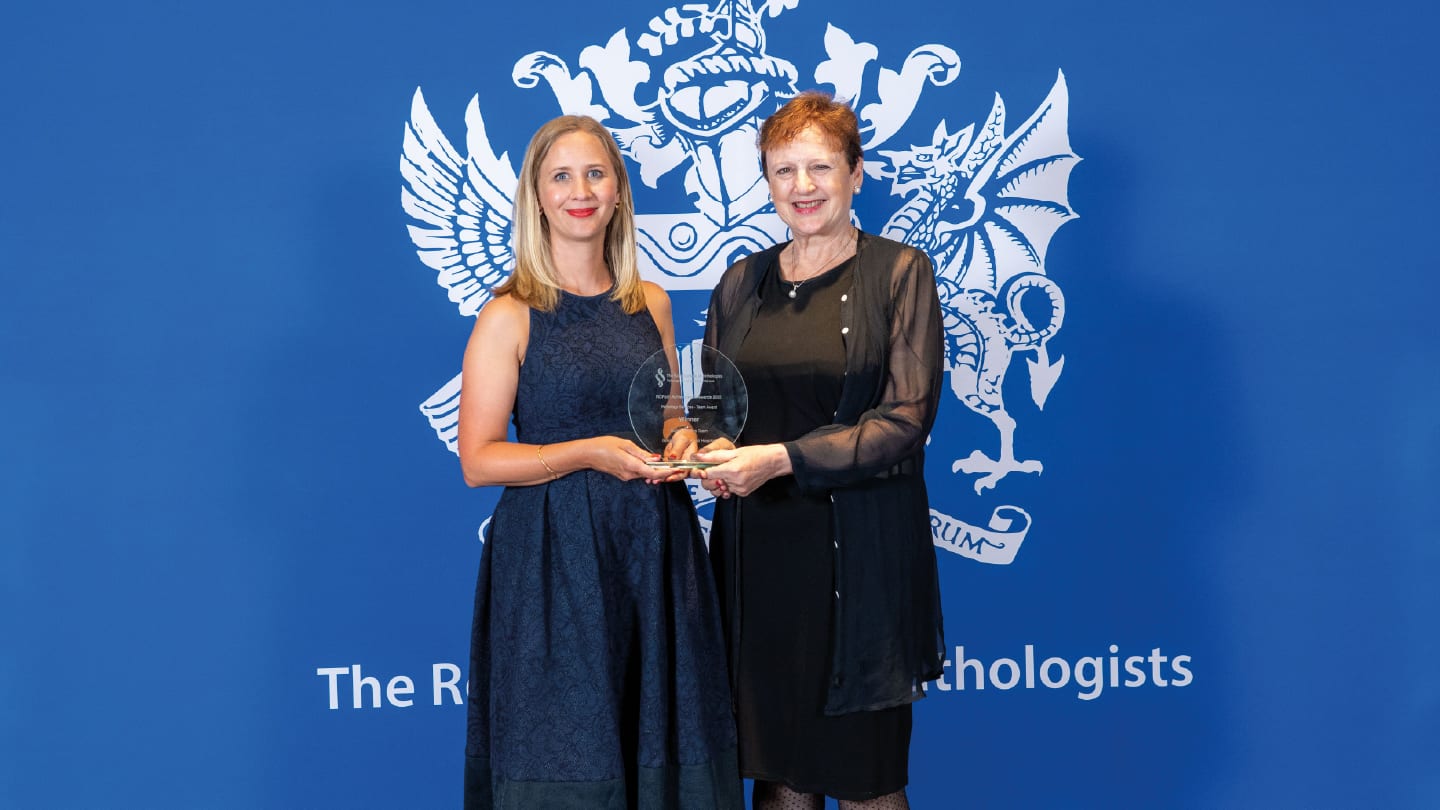Sterile site metagenomics is a cutting-edge method of pathogen diagnostics. Over the last decade, a pioneering team at London’s Great Ormond Street Hospital (GOSH) has worked tirelessly to translate the technique from the research environment into routine clinical care. This work led to the GOSH Metagenomics Service becoming the first and only nationally accredited service in the UK using metagenomics to diagnose infection.
The team didn’t stop there, going on to open up the service across the UK’s National Health Service. To date, they have performed more than 600 tests, effecting an astonishing 74 percent change in patient management.
The team’s can-do attitude to service improvement, collaborative working, and improving patient access recently earned them a 2025 Royal College of Pathologists Achievement Award. Here, Julianne Brown, Metagenomics Team Lead at GOSH, shares more about the team’s award-winning work.

When and why was the GOSH metagenomics team established, and how has it evolved?
In 2014 we had a patient who was very unwell with encephalitis (inflammation of the brain). The clinical teams had a very strong suspicion of an infectious cause, but couldn’t detect any pathogens by conventional diagnostic testing.
For the first time in the UK, we tried metagenomics sequencing on a brain biopsy from this patient and found a previously unrecognized cause of infection, called Astrovirus VA1. This virus could not be detected by any other laboratory methods, and would have remained undiagnosed if it weren’t for metagenomics.
We tried again on a second patient, and found the cause of their encephalitis was Coronavirus OC43. That virus normally causes the common cold and, consequently, it wasn’t even considered when looking for the cause of encephalitis.
We quickly realized that metagenomics held huge potential for diagnosing rare and unexpected causes of infection. After securing funding from the GOSH Charity, we set up a metagenomics diagnostic service in Microbiology.
Working very closely with colleagues at University College London (UCL) in Judith Breuer’s research group, we optimized and set up the lab methods. Sofia Morfopoulou, a computational statistician in Professor Breuer’s group, developed methods to analyze the vast amount of sequence data and identify pathogens with high sensitivity and specificity.
In 2024 we became the first UK metagenomics service to achieve accreditation by the UK Accreditation Service – confirming that our methods and processes are of a high enough quality to be used on patient samples and inform their management. We are one of only a handful of labs worldwide who provide this service to patients – some of the others being in the USA, Switzerland, Netherlands, France, and Australia.
We continue to collaborate with UCL to develop faster and cheaper methods that could make metagenomics accessible to more patients.
What advantages do metagenomics offer over traditional diagnostic methods for infectious disease?
Detection of bacteria or fungi in a patient sample is usually via cultures grown on a petri dish. It’s a long established method that is relatively cheap. However, where it falls down is when a patient is already on antibiotics or when the species is not compatible with the culturing medium. In those cases, the organisms might not grow.
Targeted polymerase chain reaction (PCR) is often used to detect viruses. This technique can be targeted to detect the genomic material (DNA or RNA) of specific organisms – if they are present in the sample, you see a positive signal; if they’re absent, a negative signal. PCR is fast, relatively cheap, and highly sensitive and specific. However, you will only find what you are looking for. Usually, with small specimens like cerebrospinal fluid or brain biopsies, there is only sufficient material to test the most likely causative organisms; if these are all negative then the patient remains undiagnosed.
Metagenomics, on the other hand, is untargeted. We sequence all of the DNA and RNA in a patient specimen, with no prior assumptions of what might be causing infection. This allows detection of common organisms but also rare, unexpected, or novel organisms. Metagenomics therefore has the potential to fill the diagnostic gap left by targeted methods.
How has the metagenomic testing approach impacted patient management at GOSH?
Metagenomics has enabled us to confirm infection in patients who otherwise would have remained undiagnosed. In some cases this has meant that the optimal antimicrobial therapy could be administered for the infection. Sometimes, sadly, a patient might be too unwell to recover or there are no antimicrobials available against the infection – but we are, at least, able to provide answers for patients and their families about the cause of illness.
Where a metagenomics test provides a negative result for infection, this can also be helpful in guiding patient management. With infectious disease ruled out, doctors can more confidently recommend other treatments, such as immunosuppression, where appropriate.
When we reviewed our patients with encephalitis who had metagenomics performed at GOSH, we found that 74 percent had a change in management informed by the metagenomics result.
What diagnostic discoveries have been made as a result of using metagenomics at GOSH?
I already mentioned the Astrovirus and Coronavirus species we found that were the cause of encephalitis. Well, we discovered another unexpected cause of encephalitis in a subsequent patient, which turned out to be the mumps vaccine virus.
Outside of the central nervous system, we found that one patient’s liver disease could be attributed to Aichivirus. And when we helped to investigate an international outbreak of pediatric hepatitis, metagenomics revealed a virus called AA-2 as the cause.

What are the implications of this work for patients in hospitals across the UK?
Metagenomics has the potential to transform diagnosis of infection. As GOSH currently runs the only accredited service, we process samples from patients across the UK and Ireland. As a relatively new and small service, capacity is limited to particular syndromes, such as encephalitis and eye infection. It’s available to patients who are very unwell, in whom doctors have a strong suspicion of infection but have exhausted all other available diagnostic tests.
As the utility of the method has become apparent, many more laboratories are beginning work towards setting up their own services. These will include methods for patient specimens with different clinical syndromes to the ones we have focused on. It looks likely that, over the next few years, many more patients will be able to access this valuable service.




